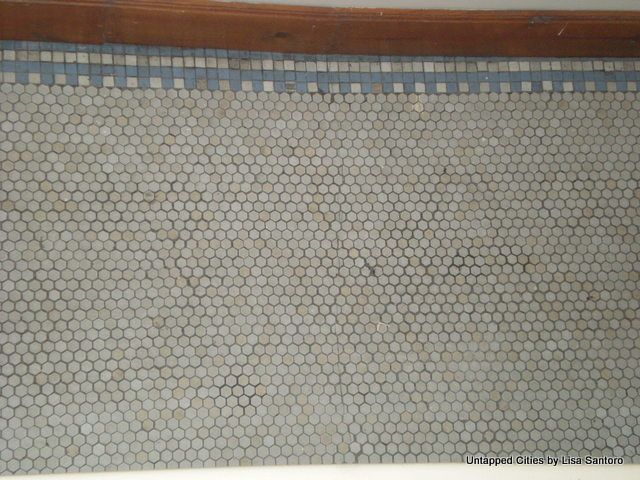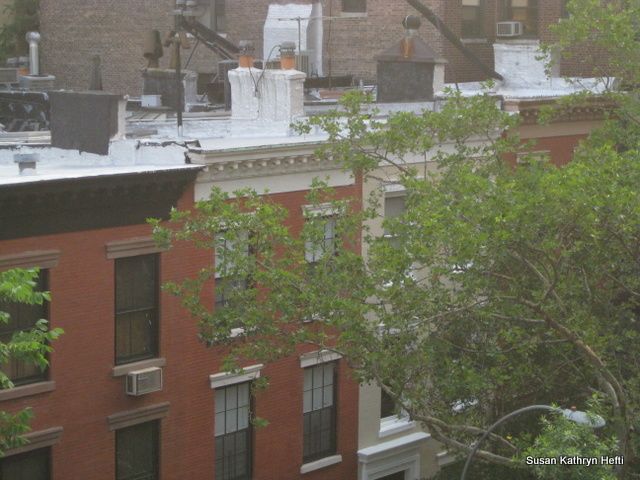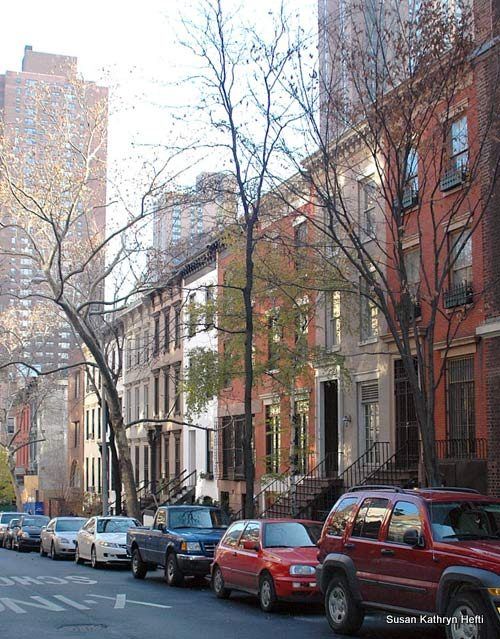Last Chance to Catch NYC's Holiday Notalgia Train
We met the voices of the NYC subway on our nostalgia ride this weekend!

 179 East 93rd Street – the childhood home of the Marx Brothers
179 East 93rd Street – the childhood home of the Marx Brothers
East 93rd Street, between Lexington and Third Avenues, is a picturesque and lively block consisting of brownstone townhouses, former tenements and stately apartment dwellings – many of these structures built during the early development of Yorkville. Situated in the middle of the block, is 179 East 93rd Street, the childhood home of the Marx Brothers, the vaudeville, Broadway and motion picture stars whom are considered one of America’s most beloved comic icons. The Marx Brothers resided here from approximately 1895 until 1909, spending their formative years in this house and on this street. In his memoir, Harpo fondly regarded this house as “the first real home they ever knew” (Harpo Speaks, 1988). Affirming this sentiment, Groucho returned to visit the house towards the end of his life. As homage to his family’s home, he had the interior common areas retiled — referred to as “Groucho Tiles”- which still exist today.
 Tiles purchased by Groucho Marx for the interior common areas of the building
Tiles purchased by Groucho Marx for the interior common areas of the building
It is indisputable that the years spent in this house played a significant role in shaping the Marx Brothers into prolific entertainers. Raised in a musical household, performing became second nature, with the neighborhood serving as both a stage and incubator to cultivate their talents. Using their surroundings as comedic inspiration, many of their characters and impressions were based on people they socialized with on a daily basis. For instance, Harpo’s “Mr. Gookie” facial expression was based on the face tobacconist Mr. Gehrke made when rolling cigars (Harpo Speaks, 1988). Immersed in this environment gave them a unique identity, as evidenced by their performances which were unlike any the public had ever seen. I had the pleasure of discussing this building’s significance with Simeon Bankoff, Executive Director of the Historic Districts Council, who stated that “this house had such a resonance with them — it helped explain where they came from.” Given the legacy of the Marx Brothers, whose groundbreaking entertainment career spanned nearly half a century, their childhood home should be a designated landmark.
As significant as this building is, it is in jeopardy of being lost without landmark protection. Just across the street sits an imposing non-contextual apartment building, occupying the site where three 1880s-era brownstones once stood. The sudden loss of these structures, each historic in their own right, was the catalyst for creating the 93rd Street Beautification Association, which advocated for extending the existing Carnegie Hill Historic District one block east, to include Marx Brothers Place, the name given to the block by the Association. This did not seem to be an unreasonable request as the block features two remarkable Civil War era brick townhouses older than any structure within the historic district. Echoing the natural slope of the street, the block also contains buildings with step down roofs on adjacent sides — a unique design that adds an extra dimension of character to an already colorful block.
 Three historic townhouses were razed to build this East 93rd Street Condominium
Three historic townhouses were razed to build this East 93rd Street Condominium
 East 93rd Street feature: the step down roof
East 93rd Street feature: the step down roof
Despite the block’s architectural and historic merits, the NYC Landmarks Preservation Commission (LPC) denied the Association’s Request for Evaluation (RFE) to extend the Carnegie Hill Historic District. This was a devastating blow to the movement as the preservation campaign had near unanimous support from residents of the block as well as majority consent from Community Board 8’s Landmarks Committee. Disappointed but not down for the count, the Association is still active and is eager to re-energize their preservation campaign.
I had the great pleasure of spending an evening discussing the necessity of preserving Marx Brothers Place with Susan Kathryn Hefti, Co-Chair of the 93rd Street Beautification Association and Noah Diamond, Marx Brothers historian and Member of the 93rd Street. Together they provided a rich historical background of the Marx family and offered myriad examples as to why this house had such a profound influence on them. According to Ms. Hefti, the streets they grew up on gave them their “accents, humor and dialect” and that the “block and denizens informed their art.” When discussing the denial by LPC, Ms. Hefti felt that the basis for landmarking “was never about the architectural value of the house per se, but about its cultural value to the neighborhood and city.”
Michael Devonshire, a Commissioner on the LPC and Director of Conservation at Jan Hird Pokorny Associates echoes Ms. Hefti’s sentiment in describing the necessity for cultural preservation: “Historic preservation is, ultimately, not about buildings, it is about culture — which is about humanity. Our cultural trajectories result in our understanding of the technologies that permit us to shape Earth-formed materials into buildings. Buildings become the shelters and settings in which we enrich ourselves more fully. Cultural preservation — in all of its diverse forms – is as important as the preservation of buildings, if we are to fully understand what it is to be human. The saving and passing on of buildings of significance helps us to resist cultural stagnation and fosters sustained renewal.”
Fortunately, there has not been any new development to further blight this nearly pristine block. However, as New York real estate has proven time and again, there is no guarantee that the next demolition on the block isn’t being planned as I write this. In 2009, the 93rd Street Beautification Association recognized this as a legitimate threat and submitted a draft Demolition Review Amendment to the City Council. Modeled on similar legislation in Boston, this bill called for a 90-day review period for demolitions of historically significant buildings greater than fifty years old. Yet as of today, no City Council member has moved forward with it.
 East 93rd Street streetscape
East 93rd Street streetscape
Sitting on the stoop of 179 East 93rd Street, it is evident why this house had so strongly resonated with the Marx Brothers. In the early evening hours, this block is alive with pedestrian and canine activity (leashed, of course). A resident of 179, Ms. Hefti addressed various passersby, personifying the neighborhood warmth that I imagine was felt by the Marx Brothers when they resided here over a century ago. As we were concluding our discussion, a man and woman approached the house, pointing to the top floor where the Marx Brothers had lived. In true ambassadorial fashion, Ms. Hefti inquired, “Are you looking for the Marx Brothers house?” The woman then nodded in assent and began to extol the house, contributing to our already two hour long discussion about its merits and significance. Ms. Hefti then asked if they lived on the block — and with a nervous laugh, the woman reluctantly responded, “I live in the building everybody hates.”
A more fitting completion to this article, I could not imagine.
To follow the efforts of the 93rd Street Beautification Association, please visit their website: https://savemarxbrothersplace.wordpress.com/
Facebook: https://www.facebook.com/marx.brothers.place
Follow their efforts via Twitter: https://twitter.com/#!/93rdstreet
If you would like to make a tax-deductible donation to support the Marx Brothers Place renewed preservation campaign, click here.
Subscribe to our newsletter